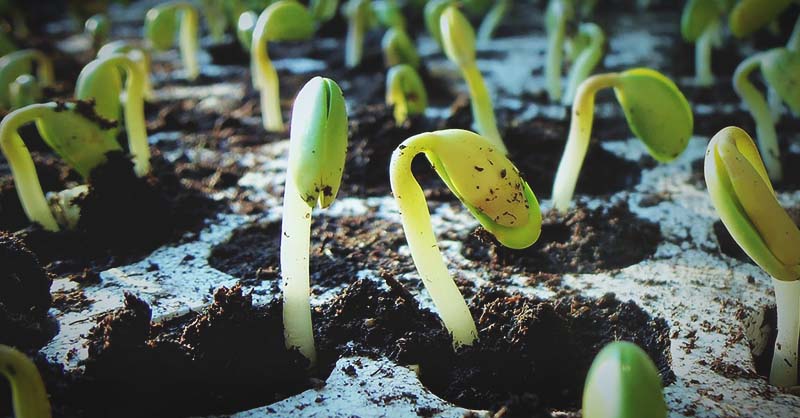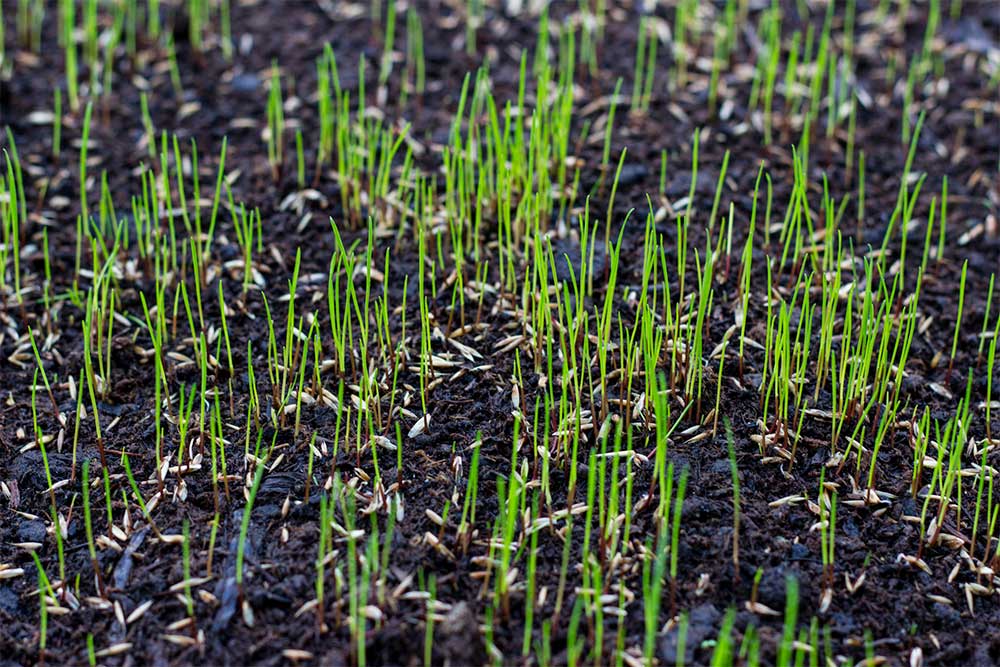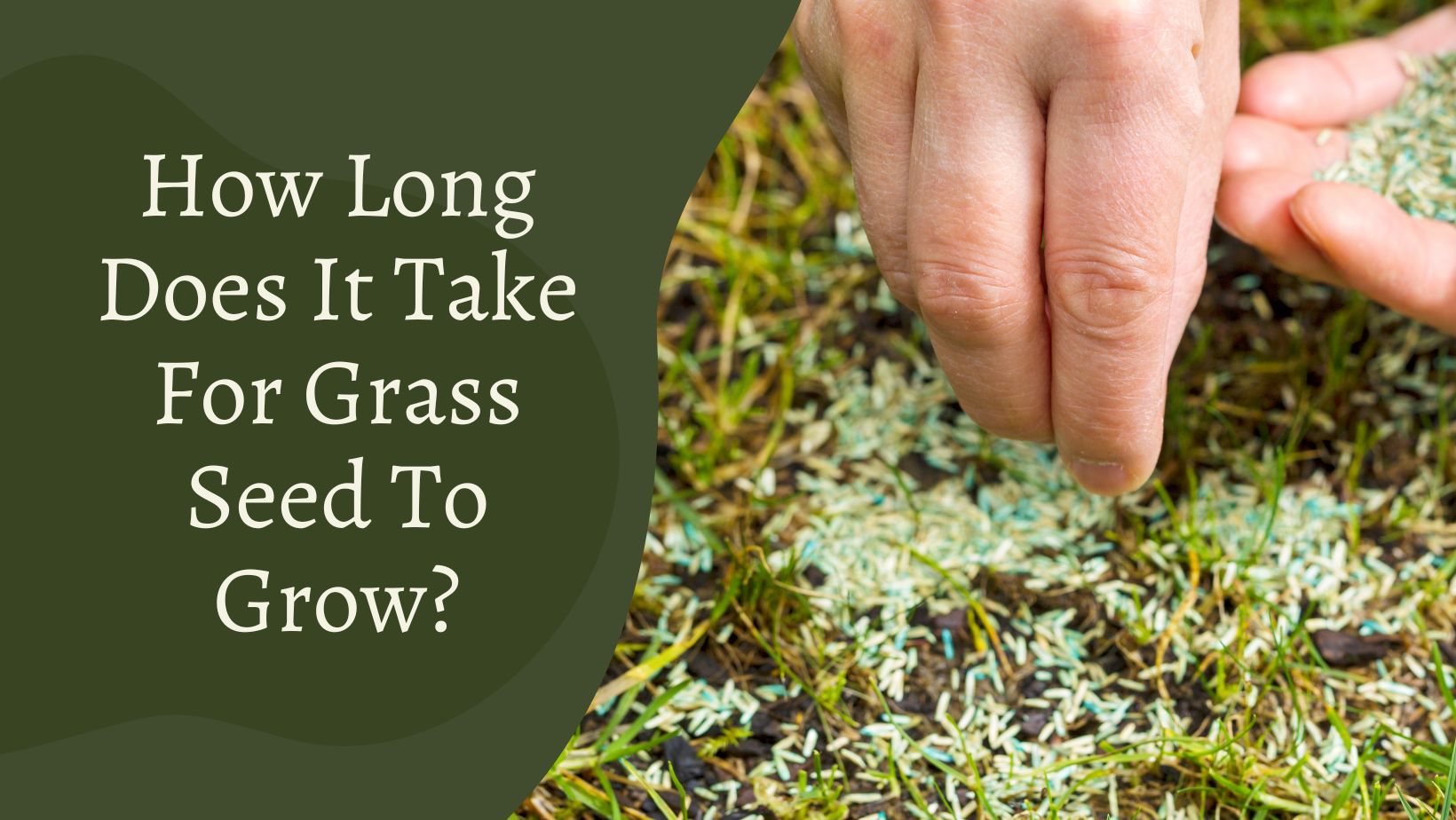Understanding the Germination Process
Grass seed germination is a complex process that involves the activation of dormant seeds, leading to the growth of new seedlings. The germination process is influenced by various factors, including temperature, moisture, and light. Understanding these factors is crucial to determining how long grass seeds germinate and how to optimize conditions for successful germination.
The germination process can be divided into three stages: seed absorption, seed activation, and seedling emergence. During the seed absorption stage, the seed absorbs water, which triggers the activation of enzymes that break down stored nutrients. The seed activation stage involves the breakdown of seed dormancy, allowing the seed to begin growing. Finally, the seedling emergence stage marks the appearance of the seedling above the soil surface.
Temperature plays a significant role in the germination process, with different types of grass seeds requiring specific temperature ranges to germinate. For example, cool-season grasses such as Kentucky bluegrass and perennial ryegrass germinate best in temperatures between 40°F and 75°F (4°C and 24°C), while warm-season grasses like Bermudagrass and zoysiagrass prefer temperatures above 75°F (24°C).
Moisture is also essential for germination, as seeds need consistent moisture to activate and grow. However, overwatering can be detrimental to germination, as it can lead to seed rot and poor seedling establishment. Light also affects germination, with some grass seeds requiring light to germinate, while others can germinate in the dark.
By understanding the factors that influence the germination process, you can optimize conditions to promote successful germination and growth. This knowledge is essential for determining how long grass seeds germinate and how to provide the best possible start for your new lawn.
Factors Affecting Grass Seed Germination Time
Several factors can influence the germination time of grass seeds, including seed type, soil quality, and environmental conditions. Understanding these factors is crucial to determining how long grass seeds germinate and how to optimize conditions for successful germination.
Seed type is a significant factor in germination time, as different species and varieties of grass seeds have unique germination requirements. For example, cool-season grasses such as Kentucky bluegrass and perennial ryegrass tend to germinate faster than warm-season grasses like Bermudagrass and zoysiagrass. Additionally, some grass seeds, such as those with a hard seed coat, may require longer germination times due to the need for additional moisture and temperature fluctuations to break down the seed coat.
Soil quality also plays a critical role in germination time, as seeds require adequate moisture, oxygen, and nutrients to germinate. Poor soil quality, such as compacted or waterlogged soil, can hinder germination and lead to poor seedling establishment. Conversely, well-draining, fertile soil can promote rapid germination and healthy seedling growth.
Environmental conditions, including temperature, light, and moisture, also impact germination time. Temperature fluctuations, for example, can affect germination rates, with optimal temperatures varying depending on the type of grass seed. Light exposure can also influence germination, with some grass seeds requiring light to germinate, while others can germinate in the dark. Moisture levels, as mentioned earlier, are also critical, as seeds require consistent moisture to activate and grow.
Other factors, such as seed age, storage conditions, and handling practices, can also impact germination time. Fresh seeds, for example, tend to germinate faster than older seeds, while proper storage and handling can help maintain seed viability and promote successful germination.
By understanding the various factors that influence germination time, you can take steps to optimize conditions and promote successful germination. This knowledge is essential for determining how long grass seeds germinate and how to provide the best possible start for your new lawn.
The Role of Temperature in Grass Seed Germination
Temperature plays a crucial role in grass seed germination, as it affects the rate and success of germination. Different types of grass seeds have optimal temperature ranges for germination, and understanding these ranges is essential for determining how long grass seeds germinate.
Cool-season grasses, such as Kentucky bluegrass and perennial ryegrass, germinate best in temperatures between 40°F and 75°F (4°C and 24°C). These temperatures allow for optimal seed activation and growth, resulting in faster germination rates. In contrast, warm-season grasses like Bermudagrass and zoysiagrass prefer temperatures above 75°F (24°C) for germination.
Temperature fluctuations can also impact germination rates. For example, temperatures that are consistently above 85°F (29°C) can lead to reduced germination rates and increased seed mortality. Conversely, temperatures that are consistently below 40°F (4°C) can slow down germination rates and lead to poor seedling establishment.
It’s also important to note that temperature affects the duration of germination. For example, at optimal temperatures, Kentucky bluegrass seeds can germinate in as little as 3-5 days, while at lower temperatures, germination may take 7-10 days or more.
To optimize temperature conditions for grass seed germination, it’s essential to choose the right time of year for planting. In general, spring and fall are the best times for planting cool-season grasses, while summer is best for warm-season grasses. Additionally, using techniques like mulching and shading can help regulate soil temperature and promote optimal germination.
By understanding the role of temperature in grass seed germination, you can take steps to optimize conditions and promote successful germination. This knowledge is essential for determining how long grass seeds germinate and how to provide the best possible start for your new lawn.
How to Create an Ideal Environment for Grass Seed Germination
Creating an ideal environment for grass seed germination is crucial for successful germination and healthy seedling growth. This involves preparing the soil, providing adequate moisture, and managing light exposure.
Soil preparation is essential for grass seed germination. The soil should be loose and well-draining, with a pH between 6.0 and 7.0. Remove any debris, rocks, or weeds that may interfere with seed germination. Till the soil to a depth of 8-10 inches to loosen and aerate it.
Watering is also critical for grass seed germination. Keep the soil consistently moist during the germination period, but avoid overwatering, which can lead to seed rot and poor germination. Water lightly but frequently, providing about 1-2 inches of water per week.
Light management is also important for grass seed germination. Most grass seeds require light to germinate, so ensure that the soil is exposed to adequate light. However, some grass seeds, such as those with a hard seed coat, may require a period of darkness to break down the seed coat.
In addition to these factors, maintaining consistent conditions is crucial for optimal germination. Avoid extreme temperatures, and keep the soil at a consistent temperature between 40°F and 75°F (4°C and 24°C). Also, avoid compacting the soil, which can prevent seed germination and seedling growth.
By creating an ideal environment for grass seed germination, you can promote successful germination and healthy seedling growth. This knowledge is essential for determining how long grass seeds germinate and how to provide the best possible start for your new lawn.
Some additional tips to create an ideal environment for grass seed germination include:
- Using a starter fertilizer to provide essential nutrients for seedling growth
- Applying a thin layer of mulch to retain moisture and regulate soil temperature
- Providing adequate air circulation to prevent disease and promote healthy growth
By following these tips and creating an ideal environment for grass seed germination, you can ensure successful germination and a healthy, thriving lawn.
Grass Seed Germination Times: What to Expect
The germination time for grass seeds can vary depending on several factors, including the type of grass, soil quality, and environmental conditions. Understanding the expected germination times for different types of grass seeds can help you plan and prepare for a successful lawn.
Kentucky bluegrass, for example, typically germinates within 7-14 days, while perennial ryegrass germinates within 5-10 days. Tall fescue, on the other hand, can take 10-14 days to germinate. These times can vary depending on the specific variety, soil quality, and environmental conditions.
Other factors that can influence germination times include temperature, moisture, and light. For example, warm-season grasses like Bermudagrass and zoysiagrass tend to germinate faster in warmer temperatures, while cool-season grasses like Kentucky bluegrass and perennial ryegrass germinate faster in cooler temperatures.
It’s also important to note that germination times can be affected by the quality of the seed. High-quality seeds that are fresh and have a high germination rate will typically germinate faster than lower-quality seeds.
Here is a general overview of the expected germination times for different types of grass seeds:
- Kentucky bluegrass: 7-14 days
- Perennial ryegrass: 5-10 days
- Tall fescue: 10-14 days
- Bermudagrass: 7-10 days
- Zoysiagrass: 10-14 days
Keep in mind that these are general estimates, and actual germination times may vary depending on specific conditions. By understanding the expected germination times for your specific type of grass seed, you can plan and prepare for a successful lawn.
Common Mistakes to Avoid When Germinating Grass Seeds
When germinating grass seeds, it’s essential to avoid common mistakes that can hinder the process. By understanding these mistakes, you can take steps to prevent them and ensure successful germination.
One of the most common mistakes is overwatering. Too much water can lead to seed rot and poor germination. On the other hand, underwatering can also be detrimental, as seeds need consistent moisture to germinate. It’s crucial to find the right balance and water your seeds lightly but frequently.
Inadequate soil preparation is another mistake to avoid. Poor soil quality can lead to poor germination rates and weak seedlings. Make sure to prepare your soil properly by loosening it to a depth of 8-10 inches, removing any debris, and adding organic matter such as compost or manure.
Insufficient light is also a common mistake. Most grass seeds require light to germinate, so ensure that your seeds are exposed to adequate light. However, some grass seeds may require a period of darkness to break down the seed coat.
Other mistakes to avoid include:
- Using old or low-quality seeds
- Not maintaining consistent temperatures
- Not providing adequate air circulation
- Not monitoring soil moisture levels
By avoiding these common mistakes, you can ensure successful germination and give your grass seeds the best chance to thrive. Remember to always follow the specific instructions on the seed package and take into account the specific needs of your grass type.
Additionally, consider the following tips to avoid common mistakes:
- Use a soil thermometer to ensure optimal soil temperatures
- Use a moisture meter to monitor soil moisture levels
- Provide adequate air circulation to prevent disease and promote healthy growth
- Monitor your seeds regularly to catch any potential issues early
By following these tips and avoiding common mistakes, you can ensure successful germination and a healthy, thriving lawn.
Monitoring and Maintaining Your Grass Seedlings
After germination, it’s essential to monitor and maintain your grass seedlings to ensure they grow into a healthy, thriving lawn. Proper care during this stage can make a significant difference in the overall success of your lawn.
Fertilization is a critical aspect of seedling care. Apply a starter fertilizer that is high in phosphorus (P) to promote root growth and development. Follow the instructions on the fertilizer package for proper application rates and timing.
Mowing is also important for seedling care. Maintain your mower at a height of 2-3 inches to promote healthy growth and prevent weed competition. Avoid mowing too frequently, as this can stress the seedlings and lead to disease or pest issues.
Pest management is another crucial aspect of seedling care. Keep an eye out for common pests such as white grubs, chinch bugs, and billbugs. Use organic or chemical controls as needed to prevent infestations and promote healthy growth.
Other tips for monitoring and maintaining your grass seedlings include:
- Watering deeply but infrequently to encourage deep root growth
- Providing adequate air circulation to prevent disease and promote healthy growth
- Monitoring soil moisture levels to prevent overwatering or underwatering
- Controlling weeds through proper mowing, watering, and fertilization practices
By following these tips and providing proper care, you can help your grass seedlings grow into a healthy, thriving lawn. Remember to be patient and flexible, as different grass types and environmental conditions may require adjustments to your care routine.
Some additional tips to keep in mind:
- Keep a lawn care journal to track your progress and identify areas for improvement
- Take regular soil tests to monitor nutrient levels and adjust your fertilization routine accordingly
- Consider using a lawn aerator to improve soil drainage and promote healthy growth
By following these tips and providing proper care, you can help your grass seedlings grow into a healthy, thriving lawn that will provide years of enjoyment and beauty.
Conclusion: Giving Your Grass Seeds the Best Chance to Thrive
In conclusion, understanding the factors that affect grass seed germination is crucial for successful germination and a healthy, thriving lawn. By following the tips and advice provided in this article, you can create an ideal environment for your grass seeds to germinate and grow.
Remember, the key to successful germination is to provide consistent conditions, including optimal temperature, moisture, and light. Avoid common mistakes such as overwatering, underwatering, and inadequate soil preparation, and monitor your seedlings regularly to ensure they are receiving the care they need.
By applying the knowledge and techniques outlined in this article, you can give your grass seeds the best chance to thrive and enjoy a beautiful, lush lawn for years to come. Whether you’re a seasoned gardener or a beginner, understanding the secrets of grass seed germination can help you achieve the lawn of your dreams.
So, how long do grass seeds germinate? The answer depends on a variety of factors, including the type of grass, soil quality, and environmental conditions. By understanding these factors and providing the right conditions, you can ensure successful germination and a healthy, thriving lawn.
Don’t let poor germination rates hold you back from achieving the lawn you want. By following the tips and advice provided in this article, you can unlock the secrets of grass seed germination and enjoy a beautiful, lush lawn for years to come.




/Grassseedgerminating-GettyImages-sb10068930a-001-5a1661d90d327a00376e5e55.jpg)




